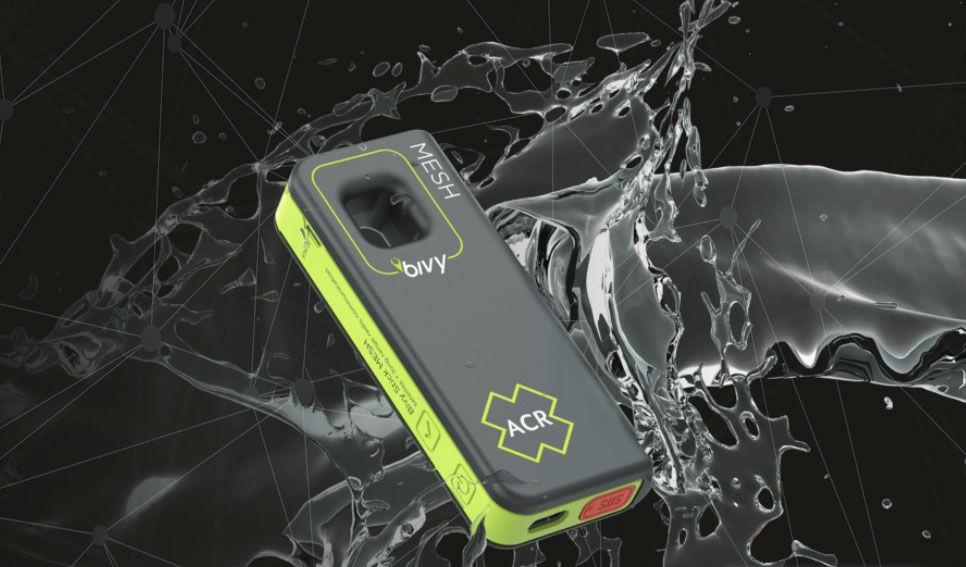LoRa Mesh Networks for Emergency Marine Communications
Will LoRa Mesh networks change the way we send an SOS from the boat?
Boaters are always concerned about emergency communications, and in recent years the big news has mostly related to LEO satellite systems like Starlink Maritime and the new potential they bring to the table. There’s just one problem: systems like this require a big investment in terms of both equipment and subscription fees. Luckily, average boaters have been able to enjoy the utility of inexpensive handheld satellite messengers, enabling you to at least send an SOS from anywhere, anytime.

There are, of course, drawbacks to any form of communications. Batteries can die. Messages can fail to get through. GPS location data can get interrupted. LoRa Mesh networks are the latest tech to address issues like these and make communications more reliable than ever before, and ACR Electronics has incorporated it into the latest incarnation of their Bivy Stick satellite messenger, the Bivy Stick Mesh, which they’ve just announced will soon hit the market.
What is LoRa Mesh
“LoRa” stands for long range, and is based on spread spectrum modulated radio communications. In a nutshell, data packets are chirp-transmitted over long distances through a linear variation of frequencies, rather than being broadcast via a single frequency. “Mesh” is the term used to describe the type of network. Instead of staying connected via a constellation of satellites or a network of towers, a mesh network is a grouping of connectivity devices that link to and communicate with one another. Essentially, it’s just like a LAN (local area network) in a building or office, but on a much larger scale and completely wireless in nature. Mesh networks can generally “heal” or fix themselves if there’s a breakdown in the network via algorithms designed to reroute communications and can “multi hop” from one node to another, so single points of failure don’t cause a system crash.
Why is LoRa Mesh Good for Boats?
From a mariner’s viewpoint one of LoRa’s big strengths is that it’s a low-power transmission method. Battery life is always problematic aboard boats, and even if your boat has the capacity to charge a unit’s internal battery you certainly won’t want to plug it in and wait for a charge-up while your boat sinks. ACR claims that the Bivy Stick Mesh will have 145 hours of regular battery life, but on top of that has a dedicated SOS battery reserve that can continue sending critical messages for 24 hours even when the main battery is depleted.

Another reason the system makes sense for boats — and for all sorts of wilderness communications — is its ability to deliver messages up to about 10 kilometers between nodes. In fact, this tech is already being used for a number of remote-area communications like isolated IoT devices, wilderness forest fire sensors, and wildlife monitoring, as well as off-the-grid communications.
Finally, it’s relatively easy and inexpensive to make devices that communicate via LoRa, allowing for products that can rival or beat current satellite messenger pricing. Then the big savings begin, because satellite messengers require service plans. These can be as little as $15 or $20 a month, but they go on as long as you use the unit and in just a few years you’ll have spent more on the service than you did on the unit itself.
Bivy Stick Mesh
While the Bivy Stick Mesh is the first device applying LoRa mesh to an emergency communications device in the marine venue, you can bet it won’t be the last. But it isn’t ready for prime time at this moment; ACR first talked about the Mesh in the spring of 2023 and at the time of this publication it has not yet been authorized for sale in the United States by the FCC. Since ACR has announced the product’s launch, however, it’s a fair bet that they expect the approval to come through very soon, and it would be surprising if other satellite messengers didn’t follow suit asap.
The Bivy Stick itself offers satellite communications via the Iridium network including app-to-app, SMS, and email. It includes GPS tracking and navigation, location sharing, and dedicated SOS alerting with 24/7 monitoring. The pocket-sized unit is significantly smaller than a handheld VHF or even a cell phone, at 4.47” long, 1.85” wide, and 0.83” thick. Weight is a mere 3.35 ounces. It plugs in via USB-C and earns an IP67 waterproof rating. MSRP pricing for the Bivy Stick Mesh is set to be $299.95.

The Future of Marine Communications
Tech changes fast in this day and age — very fast. But setting aside Starlink (which costs so much that few recreational boaters have adopted it), since the first satellite messengers hit the marine market a little over 15 years ago there haven’t been any truly game-changing technologies with the same sort of impact. Could LoRa mesh be the next? We’ll soon find out.












